How Well Do You Know 3D Printing?
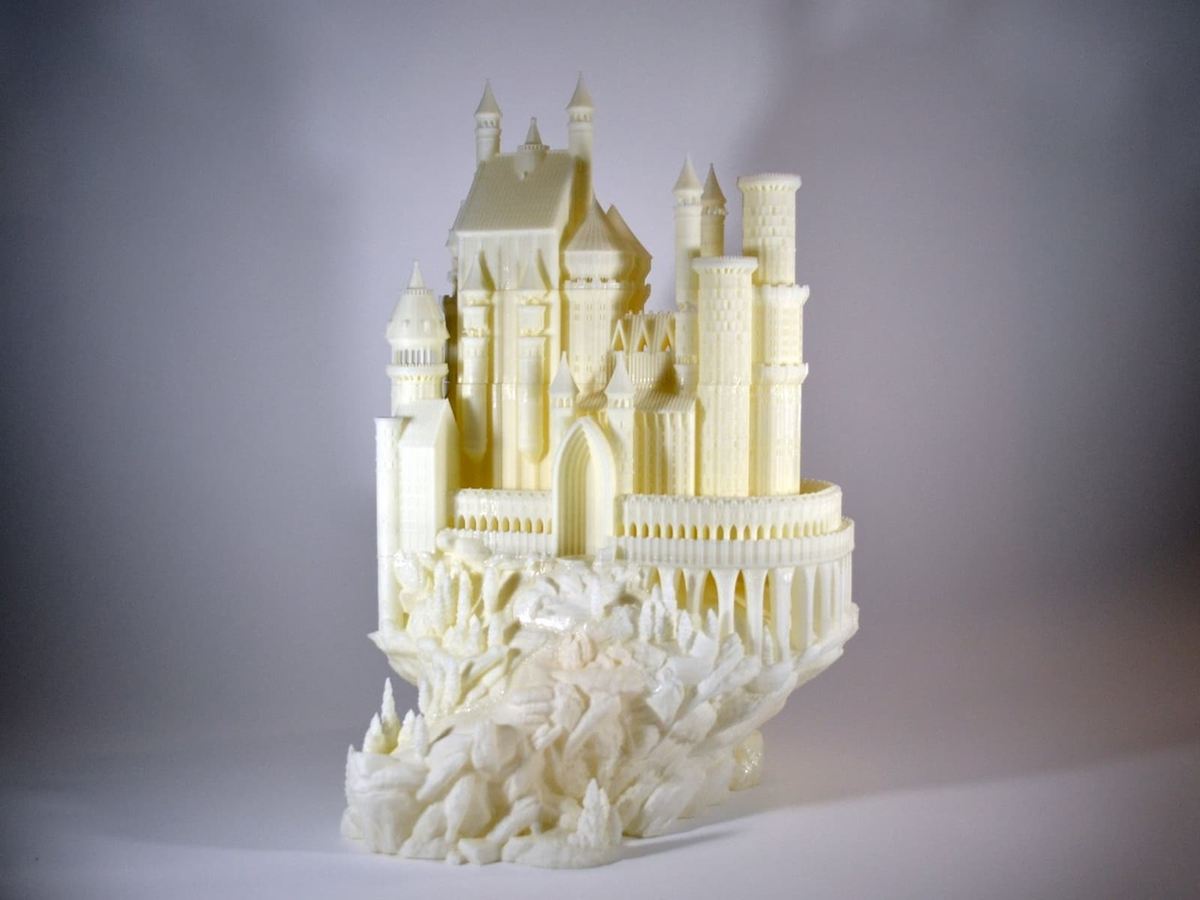
Regardless of your skill level with 3D printing, there are sure to be amazing facts about the technology that will blow your mind. We’ve compiled a list of some of the most interesting tidbits to challenge your notions of what 3D printing is and does.
FDM metal prints to 3D printed lungs, we’ll show you some feats that would be impressive even outside of 3D printing.
Solid Metal Parts Are Possible with Sub-$200 3D Printers
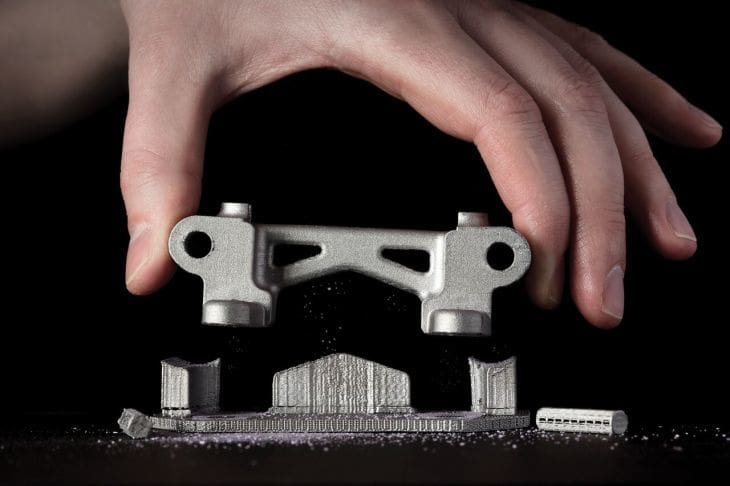
3D printing metal has long been desired, and there are a variety of methods available to do it. Unfortunately, most of them involve sending your design off to a company to get it done. While this can be useful, it’s often extremely expensive to print even small objects. A single print could cost anywhere from a few hundred to thousands of dollars.
FDM Solid Metal Parts
Looking to properly address the issue, The Virtual Foundry has developed a solution in the form of PLA filament with extremely high metal contents. Unlike most metal-infused filaments, which slightly capture the look and feel of metal, Filamet 3D prints can be put into a kiln and fused into solid metal parts once the PLA has burned away.
Prior to being heated in a kiln, these filaments are printed at temperatures of 205-215 °C, which is well within the capability of even a budget 3D printer.
Other Methods
For direct metal 3D printing, there are few options since most require extremely high temperatures or high-power lasers. Nevertheless, there are two concepts that deserve mention.
Full-metal parts using a low-cost printer is possible using a process called lost PLA casting. This method involves a few steps. First, one 3D prints the object to eventually be cast in metal. Next, plaster is molded around the object, producing a mold. Once that’s done, the plastic is burned out in a very hot furnace. With the plastic gone, the choice of metal is melted in a forge and poured into the plaster mold. Finally, after cooling, the object can be removed polished to a shiny finish. Naturally, this process is a little more involved and does require the use of some sophisticated equipment apart from the printer.
The second concept is using electroplating to print metals on a conductive surface. Currently, this method is still a long way from true 3D printing, and it’s very much still in the research stage. However, the developer claims to have achieved a 0.2-mm deposition thickness after an hour of printing. Though slow by normal 3D printing standards, considering the prototype uses syringe deposition and similar low cost materials to achieve this level of printing, there may be hope for a system that’s fast and low cost.
3D Printers Can Produce Iridescent Surfaces

Diffraction gratings are tiny optical elements (on the order of nanometers) that can redirect and separate light into various colors. Well, it turns out that you can get this same iridescent effect on the surface of a 3D print if material is deposited on a diffraction grating surface. That’s pretty cool when you consider that these structures are incredibly small compared to standard printing resolution.
When the first layer is deposited on the diffractive surface, the molten plastic conforms to the surface, making a reverse copy of the grating. To date, this technique has been used both with diffraction grating film and CDs with the foil layer removed.
3D Printing Is Trickling into Regulation

3D printing, owing to its incredible potential for technological transformation, is coming under more and more scrutiny from federal regulators. In at least three areas – civil liability, defense, and medicine – 3D printing is raising questions on safety, reproducibility, and whether or not strict regulation should be placed on those who own 3D printers.
In the civil liability area, the question arises, what happens if a 3D printed product causes an injury? Who’s liable? The EU has been working on this issue for some years, in direct response to the growing popularity of 3D printers. Meanwhile, many countries, including the United States, are still in the investigative stage, with only non-specific bills, such as HR 3313, even beginning to address 3D printing aspects.
In terms of defense, the elephant in the room is, of course, 3D printed weaponry. Ever since the 2013 release of the Liberator popularized the topic, 3D printed guns and other arms have been a constant, if quiet, source of news and debate. Recently, Defense Distributed, a company whose mission is to freely distribute plans for 3D printed weaponry, was forced to take down files at the direction of a federal judge. Interestingly enough, the Trump administration settled with Defense Distributed’s founder, permitting the posting and release of 3D printing files for firearms and effectively making 3D printable guns legal in the United States. This, however, was later blocked by ongoing litigation. It is likely that this legality fight over 3D printed guns will continue for many years to come.
Finally, in medicine, the ability to 3D print implantable devices represents a major step forward in surgical implantation research. That said, a major roadblock sits in the way. Generally, to have a medical device (especially an implantable one) approved by the FDA, a design must be shown to address potential flaws that could cause undue harm to a patient using the device. Meanwhile, the goal of 3D printed implantable devices is to create devices customized for particular patients, which promises to be unwieldy with respect to FDA approval. For more information, check out this whitepaper on the regulation of 3D printed medical devices.
3D Printing Can Make an Unsmashable Guitar (and More)

Ever since Pete Townsend of the Who smashed his guitar in 1968, the idea of smashing a guitar has become an iconic part of rock and roll culture. Of course, smashing a guitar is not only expensive but quite wasteful since, well, guitars are meant to be played rather than destroyed…
Nevertheless, 3D printing has provided a solution that still allows us to get our frustration out in times of musical euphoria without causing thousands of dollars worth of damage to a guitar.
Yngwie Malmsteen, a Swedish guitarist, best known for songs like “Rising force” and “Baroque and Roll”, commissioned Sandvik Group, an engineering firm, to create the world’s first unsmashable guitar for him. Looking at how this guitar is made, the specifications are impressive, as it is additively manufactured out of laser-printed titanium in order to stay both strong and lightweight.
In the video of its first concert, the guitar survives Malmsteen’s onslaught, however, his amps and surrounding equipment are no match for the guitar and the power of rock and roll thrown mercilessly in their direction.
Fun aside, the project is interesting because it highlights how 3D printing can be used to create unique and complex structures that are strong and lightweight with a minimum of material. Next to the manufacturing method – creating a single piece using a titanium alloy – the project also made use of an “isotropic lightweight structure”, which minimizes material and maximizes strength.
3D Printing Can Produce "Impossible" Shapes
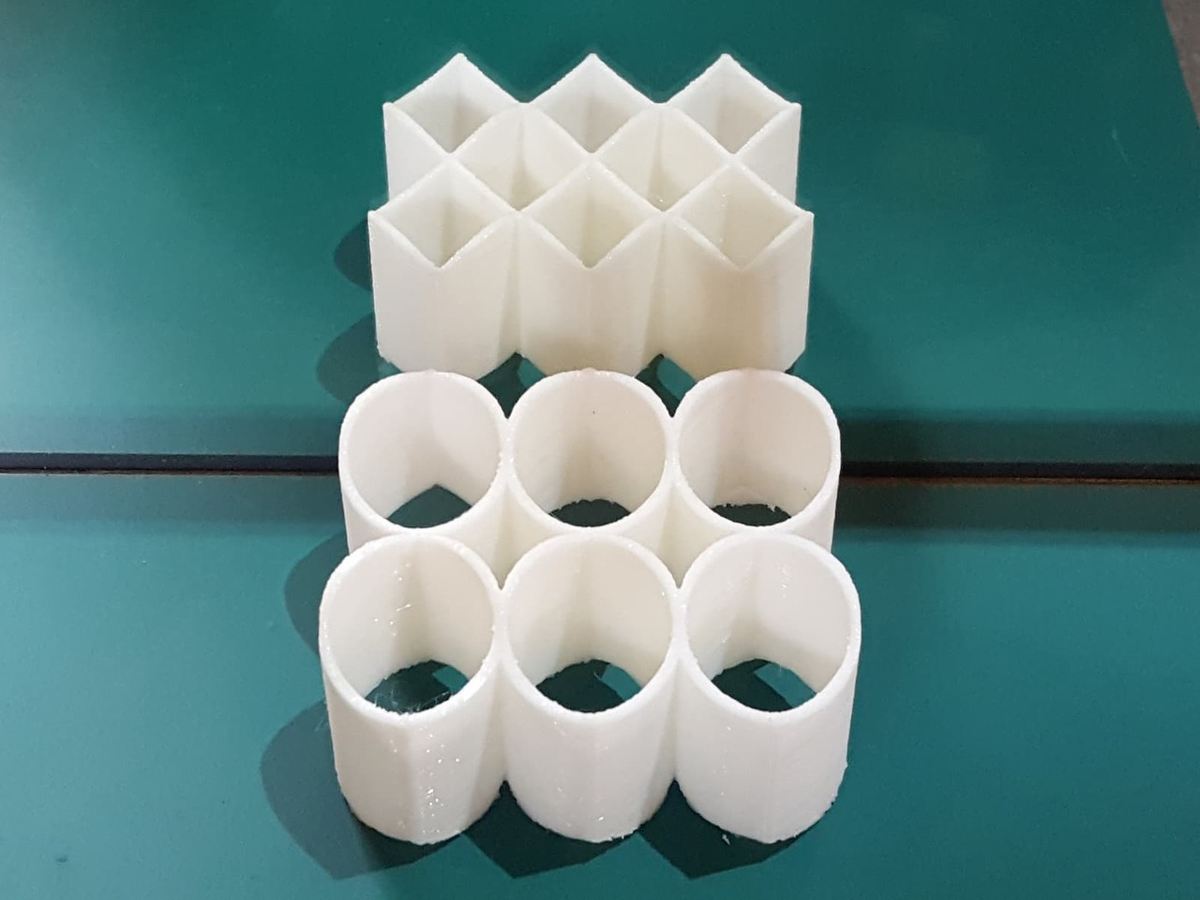
3D printers are capable of a variety of amazing things, but did you know that they can also produce optical illusions? In a video from CrazyRussianHacker, you can see five optical illusions that change based on the orientation with which you look at them. Incredibly, all of these illusions are easily 3D printable and can be found on Thingiverse:
- Word illusion that says “black” and “white”
- Permanently right/left facing arrow
- Penrose triangle 1
- Penrose triangle 2
- The squarcle
In addition to fixed optical illusions, moving optical illusions like this pinwheel illusion are easily printable and will impress your friends. If you’re looking for something more challenging to print, try this straight pole through a curved hole illusion for an oddly satisfying 3D print.
Once again, fun projects like these showcase the flexibility of 3D printing. Geometrically speaking, the only limit is your imagination!
3D Bioprinting Can Create Pseudo Organs
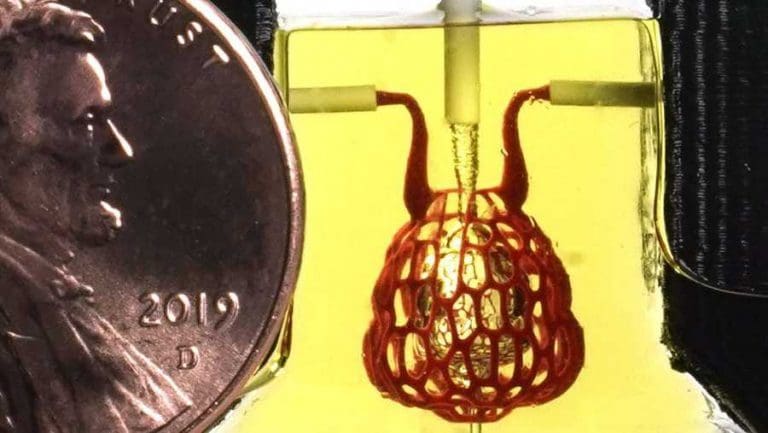
In many futuristic films and television series, when a character is injured, there’s no shortage of replacement parts on hand to bring them back to full form. And while this may sound like pure science fiction, it’s quickly becoming science fact in the real world.
Bioprinting, while still in the early stages of research in most areas, is a constantly developing field, wherein 3D printing concepts are applied to produce function-specific tissue. Applications range from graftable skin to transplantable hearts.
Recently, researchers from the Brown School of Engineering and the University of Washington have created a new method called “SLATE”, or stereolithography apparatus for tissue engineering. This device is capable of 3D printing tiny vascular networks, which are necessary for the mixing and flow of blood.
While this work is preliminary, it demonstrates the concept of 3D printing small vascular networks, which has been one of the critical limitations to creating living replacement tissue for implantation into human beings. Future work will center around increasing the size and complexity of these networks as well as looking for new applications of this type of technique, including 3D printed valves for the vessels to control localized blood flow.
The Lightest Materials on Earth Can Be 3D Printed
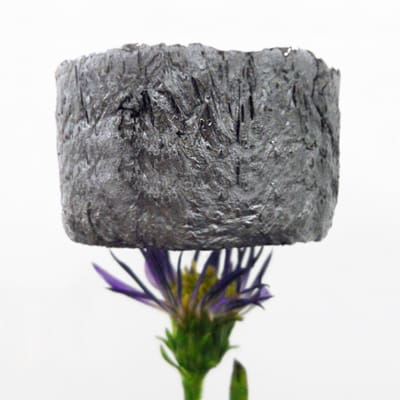
Aerogel is a classification of material where 99.8% is void and the remaining 0.2% is solid. This type of material has the unique property of being an extremely good insulator, even to the point of being able to shield a human hand from a flame thrower.
Incredibly, this fascinating material can now be 3D printed using a specially-modified 3D printer. This particular configuration includes graphene, an extremely strong material that, when combined with aerogel, is light enough to balance on the tip of a dandelion head but insulating enough to, again, withstand the heat of a flamethrower.
Current application areas of 3D printed aerogel include various applications in biomedicine, energy storage, and the automotive and aerospace industries. In fact, NASA is currently investigating aerogels for use in re-entry vehicles for space exploration due to their highly thermally insulating properties.
3D Printing Can Be Used to Open the Wrong Doors
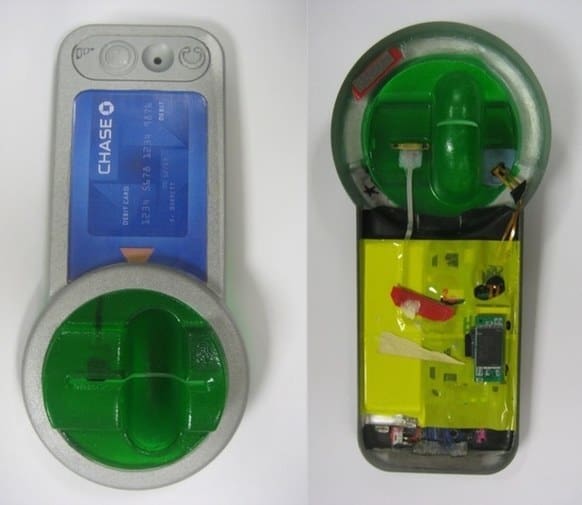
As with any up-and-coming technology, 3D printing poses immediate threats to security.
One example is fingerprints, which can be 3D printed using a standard SLA printer to unlock a cell phone.
This might not at first seem like a very efficient method, given the necessity to obtain the fingerprint in the first place, but it does present a potential concern. As an example, the potential of a criminal investigation unlocking a suspect’s phone with lifted fingerprints could have complex ramifications.
If that weren’t bad enough, 3D printing has also been reported to create perfectly-fitting credit card skimmers. With examples like these, one can be sure that 3D printers have a great deal of potential in solving and causing problems.
3D Printing Enables the Production of "Soft" Robots
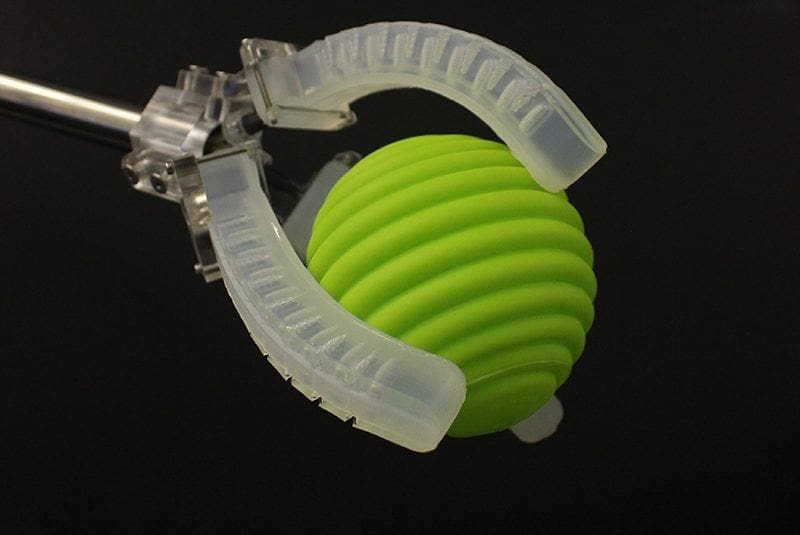
Robots have captured the imagination for many years, and with the advent of 3D printing, creating them has become much more accessible. One avenue where significant progress is being made is in the fabrication of “soft” robots. Soft robots are robots that have soft and flexible parts, usually with embedded sensors, to more naturally replicate the delicate handling that nature provides in the form of human hands and limbs.
It may not be immediately obvious why a robot should be soft. Yet, to do the delicate and intricate work of surgery, for example, a robot needs to be gentle enough to not destroy human tissue. Without soft surfaces and sensors, a robot couldn’t even shake a human hand without significantly injuring the person on the other end.
Needless to say, several research groups are working on soft robotic hands and other objects to make robotic integration seamless, albeit if a little creepy. 3D printing comes in in the form of producing molds or directly 3D printing flexible materials, including silicone.
One of the biggest obstacles that robots have been able to overcome thanks to 3D printing is to have a soft exterior. With a softer exterior, robots can pick up and manipulate delicate objects with ease without the risk of crushing an object.
Water Filters Can Be 3D Printed
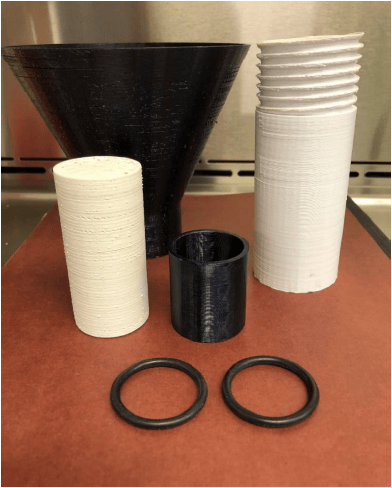
One amazing attribute of 3D printers is their ability to create objects that are useful in daily life. For most, this usually amounts to items like pen holders and planters, but using the chemical properties of plastic, there also exists the possibility of filtering water.
A group at Duquesne University is currently researching the potential to filter out fluoride from water using 3D printing filament impregnated with calcium carbonate. According to their research, the filters were capable of removing small amounts of fluoride without any alteration to the base filament other than being printed as a filter. The 3D printable water filters (and funnel) require very little preparation other than standard printing with PLA.
Future work by this group includes optimizing the quantity of fluoride absorbed by changing the internal geometry of the filter as well as looking at chemical treatments and other impregnatable materials to absorb additional fluoride.
(Lead image source: plexusglobalinc.com)
License: The text of "3D Printing Facts: 10 Things That Will Blow Your Mind Away" by All3DP is licensed under a Creative Commons Attribution 4.0 International License.